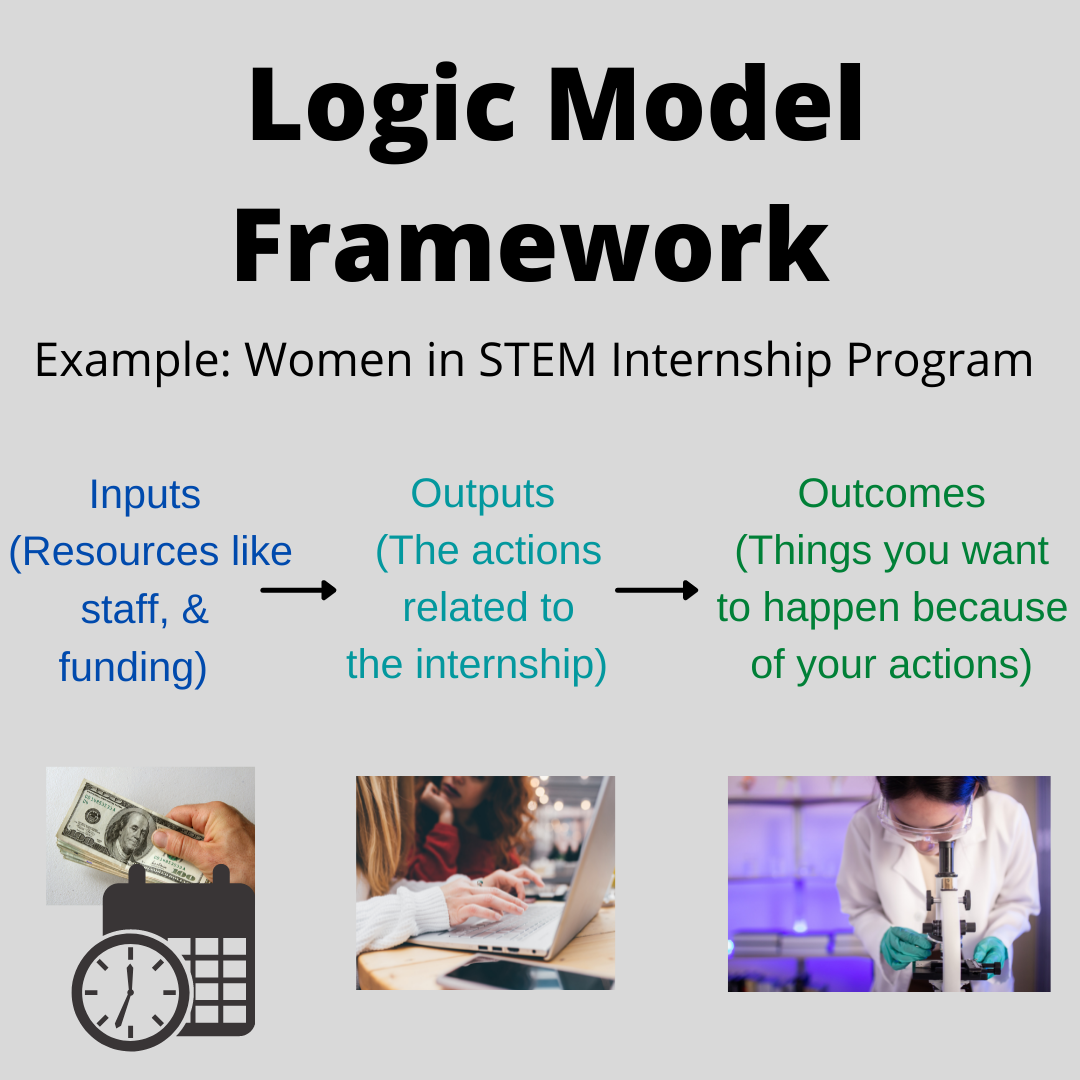In grad school, my thesis advisor taught me about one of the most valuable tools I have ever used in my career: the logic model. I remember being overwhelmed by the technical nature of it, but once I got out of the weeds, I absolutely fell in love with this tool and now feel like I’m almost a logic model evangelist. If you stick with me, I can show you why I feel so strongly about the logic model and, more importantly, the process that one goes through to create it.
As a tool, a logic model is beneficial when creating a new product or service for your audience. Logic models can also help you to examine an existing product or service to see if it is achieving the desired outcomes. It allows a team to challenge assumptions and look for possible changes that you need to make to an existing product, program, or service.
So what is a logic model?
The short answer is, logic models are visual graphics that show the shared relationships among inputs and outcomes. Inputs can be resources (i.e., time/money/space) and activities (i.e., what your project or product will do). Outcomes include outputs (physical things produced) and impact on the target audience. It depicts the relationship between the activities and their intended effects.

If that seems a bit hard to envision, it might help see an example of a logic model. Let’s say you have created a “Woman in STEM” internship program at your organization. You can use the model to identify the outcomes that you hope to achieve with this program and then work backward using this visual tool. This tool will walk you through filling in the inputs (people, funding, actions) you will need to do to achieve this goal. The logic model can be your guide as you work to determine how to measure your outputs. If you identify in your logic model that you want to serve 40 historically underserved girls in the first two years, what is the best way to keep track of participation demographic data? In contrast, if you want 90% of participants to leave the program empowered to believe that there is a place for them in STEM careers, your team may wish to use an exit interview or survey to measure this outcome.
Next in this series, I will share some tips and tricks for facilitating a logic model creation with your team. If you would like support in bringing logic models to you or your staff, please schedule a call with me to discuss the best way to meet your needs.
Want to know more about Empowered Development Consulting? Reach out to me, Meghan Scheidel, and find out how Empowered Development Consulting can help you.
